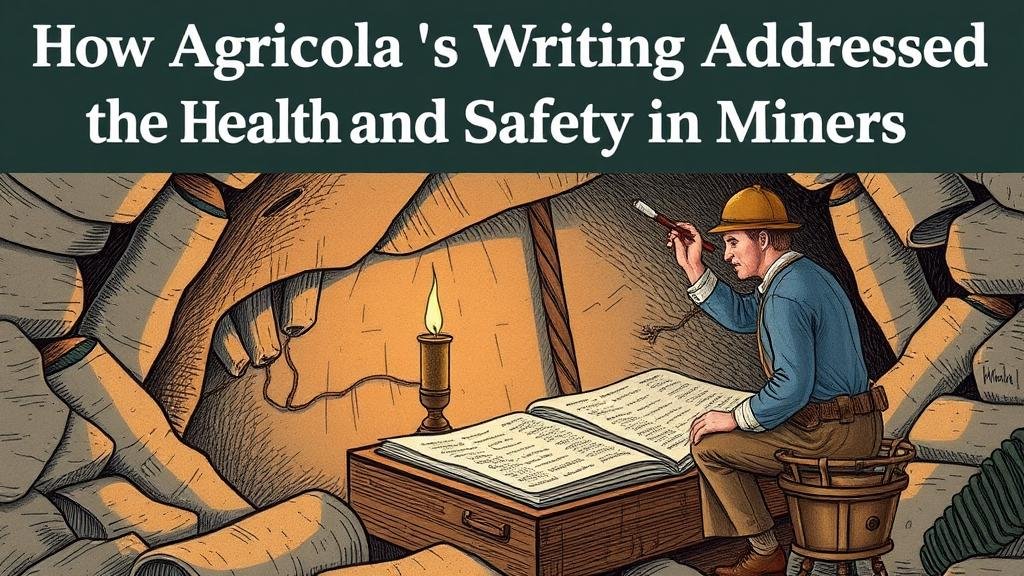How Agricola’s Writing Addressed the Health and Safety of Miners
Introduction
Georgius Agricola, a 16th-century scholar and scientist, is often regarded as the father of mineralogy and mining science. His seminal work, De Re Metallica, published in 1556, served as a critical resource for understanding the mining industry, particularly in terms of health and safety practices for miners. This article explores how Agricola’s writings addressed the health and safety of miners, punctuating the importance of these considerations in the mining sector.
Historical Context of Mining Practices
During the time of Agricola, mining was an essential industry in Europe, particularly in regions rich in mineral resources. But, it was also a dangerous occupation, fraught with health hazards such as respiratory diseases, accidents, and exposure to toxic substances. As miners worked long hours underground, the absence of safety regulations made them susceptible to various occupational hazards.
Health Hazards in Mining
Agricola recognized the various health hazards prevalent in mining practices of his time. His observations encompassed different types of illnesses associated with mining, particularly focusing on:
- Respiratory Issues: Dust inhalation from mining operations led to ailments similar to silicosis, a condition still recognized today.
- Accidental Injuries: The risks of rock falls, equipment failures, and unstable tunnels were prominent themes in Agricolas work.
- Toxic Material Exposure: Miners were often in contact with substances like arsenic, which posed serious health risks.
Safety Recommendations in De Re Metallica
Agricolas De Re Metallica provided practical recommendations to improve mining conditions, advocating for miners’ health and safety through organized methods. His approach can be categorized into preventive measures and workplace standards.
Preventive Measures
Agricola emphasized the importance of preventive measures to minimize health risks. He promoted practices such as:
- Ventilation: The design of mines should include proper ventilation shafts to alleviate the buildup of harmful gases and dust, which Agricola recognized as essential for miner safety.
- Regular Health Checks: Miners should undergo periodic health assessments to identify early signs of respiratory ailments.
- Use of Protective Gear: Though rudimentary by today’s standards, Agricola suggested that miners utilize basic protective equipment to guard against dust and debris.
Workplace Standards
Also to preventive measures, Agricola proposed specific workplace standards aimed at creating safer mining environments. Through detailed descriptions, he laid out:
- Structural Integrity: Advocating for robust support systems within mines to prevent collapses and accidents.
- Safe Access: Ensuring safe entry and exit points to enhance emergency response and reduce risks during operations.
- Training and Supervision: Emphasizing the need for skilled overseers who could train miners in safe working practices.
Impact of Agricolas Work on Modern Mining Practices
Agricola’s writings laid the groundwork for subsequent developments in mining safety regulations. His dynamic approach to addressing health challenges in mining resonated through the centuries, influencing modern health and safety standards. Today, mining companies utilize sophisticated safety protocols; however, the core principles established by Agricola hold merit:
- Continual Improvement: Modern mining practices emphasize ongoing research and technological advancements to enhance miner safety.
- Health Monitoring: Regular health screenings and risk assessments are now standard in the industry, echoing Agricolas foresight.
- Regulatory Frameworks: Governments have enacted laws to enforce safety standards in mining, underscoring the need for worker protection that Agricola championed.
Conclusion
Agricola’s De Re Metallica serves as a pivotal reference in the evolution of mining practices, particularly regarding the health and safety of miners. By drawing attention to the occupational hazards faced by miners and proposing innovative solutions, Agricola established a blueprint for future mining regulations. As mining continues to evolve into an industry focused on sustainability and worker welfare, the insights provided by Agricola remain invaluable, demonstrating that the pursuit of knowledge in safety practices is timeless and essential.


